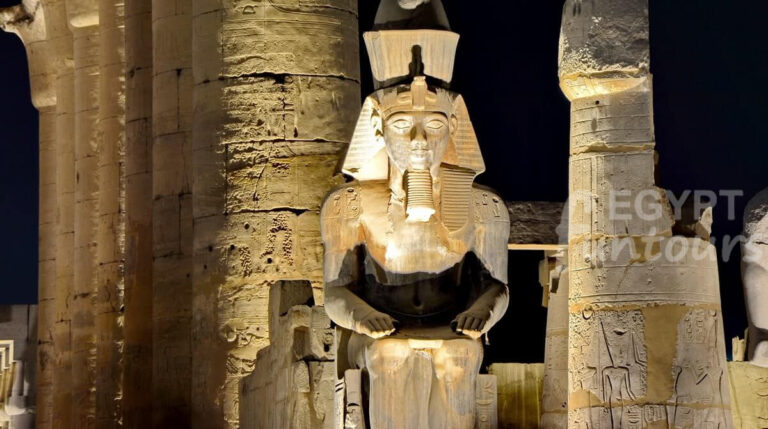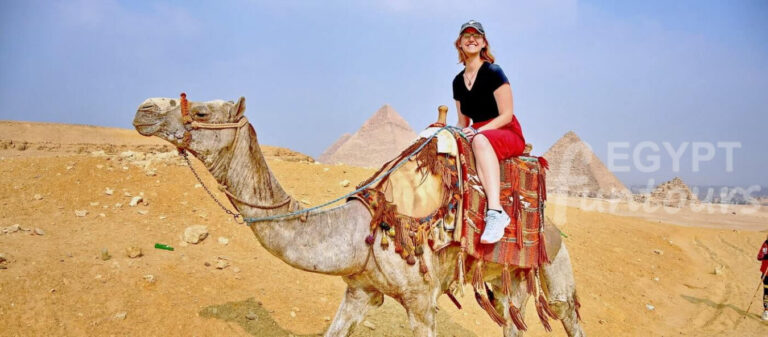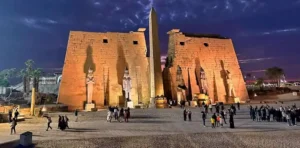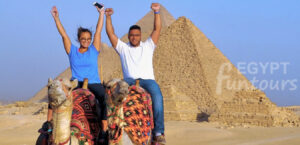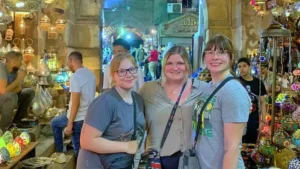The Egyptian Scarab
The Egyptian scarab beetle represented a powerful symbol of rebirth, transformation, and protection. Because of its behavior of rolling dung balls, Egyptians associated it with the sun god Ra and his daily journey across the sky. People used scarabs as amulets for protection and placed them in tombs to aid the deceased in the afterlife. The scarab was a common motif in Egyptian art, jewelry, and seals, and its legacy continues to resonate today as an emblem of regeneration and divine connection.

The scarab beetle is a prominent symbol in Egypt, representing good luck and the sun god Ra. Ancient Egyptians saw the beetle’s behavior of rolling dung balls and burying them as a metaphor for Ra’s journey across the sky and the daily cycle of rebirth. They believed the scarab brought good fortune and new life, and its ancient Egyptian name, “Khe-Ber,” meant “existence.”
The text also describes different types of dung beetles, which are all part of the Scarabaeidae family. These beetles are vital for the planet, as they either roll or bury dung, which keeps soil fertile and provides a place for seeds to grow. Rolling species are called rollers, and burying species are called tunnelers. A third type lives directly in the dung. Egyptian scarab beetles are unique because they are the only known animals, besides humans, that use the Milky Way to navigate.
Significance of the Egyptian Scarab Beetle

The scarab beetle held great importance in ancient Egypt. It symbolized regeneration and rebirth because of its life cycle. It was also linked to the sun god Ra. People likened the beetle’s dung-rolling activity to the sun’s daily journey. Egyptians crafted scarabs into protective amulets for good luck. They also placed them on mummies for protection in the afterlife. People often used the flat underside of a scarab as a seal. Pharaohs commissioned scarabs to commemorate important events.
Use of the Scarab Beetle
The scarab beetle was a significant symbol in ancient Egypt, representing transformation and protection. Egyptians used scarab amulets and jewelry for good luck and to ward off evil. Scarabs were also vital in funerary practices, with a large “heart scarab” placed on the chest of the deceased to ensure a favorable judgment in the afterlife.
The Role of Funerary Scarabs in Ancient Burials
Ancient Egyptians used funerary scarabs, amulets shaped like dung beetles, in burial rituals. They placed these scarabs within mummy wrappings or as jewelry on the deceased. Egyptians believed the scarabs protected the soul on its journey to the afterlife. These amulets often had inscriptions with spells and prayers to assist the dead and symbolized the rebirth of the soul.
Heart Scarabs and Their Purpose in Mummification
In ancient Egypt, people placed heart scarabs on the chest of the deceased. These amulets replaced the physical heart. Egyptians believed the amulets safeguarded the soul and helped a person navigate the afterlife. They considered these amulets vital because they saw the heart as the center of intelligence and emotions.
Funerary Scarabs in Burial Practices
In ancient Egyptian burial traditions, funerary scarabs were important amulets. Egyptians placed them on mummies or had the deceased wear them to symbolize protection, resurrection, and guidance in the afterlife. People believed these amulets warded off evil, promised rebirth, and helped the soul navigate its journey and judgment in the next world.
The scarab beetle symbolized regeneration and rebirth in ancient Egyptian beliefs due to their observation of the beetle’s life cycle. Egyptians saw new life emerge from dung balls, which the beetles created to lay their eggs. This natural phenomenon became a powerful metaphor for the cycle of life, death, and rebirth, mirroring their beliefs about the afterlife. This symbolism led to the widespread use of the scarab in amulets and artwork as a reminder of life’s eternal nature.
Amuletic Scarabs
Ancient Egyptians used amuletic scarabs as protective charms. They wore these small, carved beetle figurines as jewelry or carried them for spiritual protection against evil. Many had inscriptions with spells or symbols related to the god Khepri, who symbolized creation and rebirth.
Scarabs were also important talismans made from materials like stone and precious metals. People believed the carvings of blessings, spells, and deities gave the scarabs magical powers for good luck and to ward off evil. Egyptians wore them as jewelry and placed them in tombs to protect the deceased on their journey to the afterlife.
They used scarab symbols for protection on sarcophagi and tombs. They placed heart scarabs, often made of greenstone, on the deceased’s chest. These amulets protected the heart during mummification and prevented it from testifying against the person during the judgment of the dead. The symbols also represented the hope of rebirth and reincarnation.
Transformational Scarabs and Their Symbolism
In ancient Egypt, transformational scarabs were amulets that depicted a beetle pushing a solar disk. This image symbolized the sun’s daily journey across the sky and its connection to the sun god Ra. These scarabs represented the concepts of renewal and transformation, mirroring the sun’s daily rebirth and the beetle’s role in the cycle of life. They were used in rituals and worn as protective talismans, linking their wearers to divine forces and the promise of rejuvenation.
The Scarab Beetle’s Connection to the Sun God Ra
In ancient Egyptian mythology, the scarab beetle was a powerful symbol of regeneration, linked to the sun god Ra. The beetle’s habit of rolling dung balls was seen as a metaphor for the sun’s daily rebirth. This led to art showing the beetle pushing the sun across the sky, which reinforced its connection to Ra’s cosmic journey and the continuous cycle of life.
Scarab Symbol in Egyptian Hieroglyphs, Statues, and Sculptures
The scarab was a highly significant symbol in ancient Egyptian culture, deeply connected to the god Khepri, a form of the sun god Ra associated with creation and rebirth. Due to this divine link, scarabs were widely used as protective amulets to guard against disease and evil. They also symbolized resurrection and eternal life, with scarabs often placed in tombs to ensure the deceased’s rebirth and safe journey in the afterlife. The scarab’s cultural importance made it a popular motif in various forms of Egyptian art and ritual objects.
Notable Examples of Egyptian Scarabs
Ancient Egyptian scarabs served both decorative and symbolic purposes and give us insights into the lives of pharaohs. The Heart Scarab of Tutankhamun, made of green stone, was a crucial funerary item that people designed to protect the pharaoh’s heart in the afterlife. The Scarab of Amenhotep III often featured inscriptions that detailed the pharaoh’s significant achievements and events, like his lion hunts. Similarly, scarabs of Thutmose III, a great military pharaoh, were decorated with scenes of his victorious military campaigns and a list of his accomplishments. These scarabs recorded history and acted as a powerful amulet.
Different Types of Egyptian Scarab Beetles
Ancient Egyptians used various types of scarab beetles for different purposes. Heart scarabs replaced the deceased’s heart during mummification. People used funerary scarabs for general protection and guidance in the afterlife. The living wore amuletic scarabs for good luck and safety. Rulers created royal commemorative scarabs to celebrate their achievements, and officials used administrative scarabs as official seals. People used name scarabs as personal identifiers. They also used transformational scarabs to symbolize the sun’s journey and daily renewal. Finally, Egyptians used sacred scarabs as religious offerings in temples.
Modern-Day Egyptian Scarab in Markets
In modern Egyptian markets, the scarab beetle remains a popular symbol of good luck and protection. Vendors sell these talismans, often made from materials like lapis lazuli and other semi-precious stones with bluish hues, in various forms. Popular scarab products include necklaces, wallet charms for attracting wealth, and bracelets. The continued popularity of the scarab reflects its deep cultural roots, allowing artisans to blend ancient symbolism with modern fashion.
Where Can I See Egyptian Scarab Today?
Egyptian scarabs are in museums worldwide. You can find them at the British Museum in London, the Metropolitan Museum of Art in New York, the Egyptian Museum in Cairo, the Louvre Museum in Paris, and the Pergamon Museum in Berlin. These museums let the public see these ancient artifacts and learn about their history.

